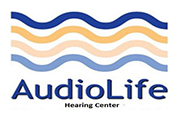
Most people think that as they age hearing loss will be unavoidable. The gradual decline in hearing is not just a outcome of time passing but a consequence of accumulated damage. Every exposure to loud noise, whether at a concert, mowing the lawn, or through loud earbuds, accumulates over time, resulting in permanent hearing loss. Alarmingly, this problem isn’t restricted to older adults; even children are now showing signs of preventable hearing loss.
Worldwide, about 34 million children experience hearing loss, and an astonishing 60% of these cases could have been prevented. The number of instances in adults is even more alarming and seriously needs to be addressed.
Hearing loss’s current contributing factors
To deal with the problem of hearing loss, it’s essential to understand why it has become so commonplace in today’s world. Several factors contribute to this problem, each interconnected and increasing the danger of hearing damage:
- Population Density in Cities: The population of the world’s cities is heavier than ever before. With more people living in close quarters, the volume levels in urban settings have increased substantially. This elevated urban noise, from traffic to construction, has a huge impact on the rising incidence of hearing loss.
- Social Environments: Modern social environments, such as restaurants and bars, are often excessively loud. Lots of social establishments have adopted the tactic of boosting their volume levels to give the illusion of increased success. Even without live music, the background noise in these places can be hazardous, leading to cumulative hearing damage.
- Technological Advancements: The widespread use of earphones and earbuds is possibly the most significant factor in the increase of hearing loss. It’s easier than ever before to listen to music and podcasts because of headphones and earbuds. But regrettably, the propensity to crank the volume up, in conjunction with the closeness of the device to your ears can cause increasing damage to your ears. This type of damage builds-up gradually often going unnoticed until it begins to become noticeable and irreversible.
It’s important to realize that while loud noises have always been a part of human life, from the roars of ancient beasts to the raging of steam engines, the contemporary world presents new challenges. The prevalence of modern technology accompanied by current levels of noise has made hearing loss a lot more common.
Prevent hearing loss – proactive measures
Why hearing loss remains such a prevalent issue is somewhat a mystery considering how preventable most forms are, especially in children. The key to prevention is all about personal responsibility and awareness. Here are a few effective approaches to help preserve optimal hearing health:
- Leverage Technology to Protect Your Hearing: A number of apps are available that can determine ambient noise levels and supply real-time feedback on whether your environment is safe for your ears. These tools are invaluable for increasing awareness and making informed choices about your surroundings.
- Utilize Ear Protection: If you’re planning to be in a loud environment, like a concert, or while operating noisy machinery such as a lawnmower, using hearing protection is crucial. The threat of hearing loss will be greatly reduced by using earmuffs or earplugs which are inexpensive and readily available. A significant difference can be made by putting into practice this simple and often neglected step.
- Monitor Your Earbud Volume: Personal audio devices, including earbuds, are a convenient way to listen to music and other audio content, but they present a considerable risk if used irresponsibly. If your device has a noise limit setting, you can use it to safeguard your ears from damaging sound levels. Taking the time to adjust these settings can prevent ongoing damage to your hearing.
- Be Careful About Moderate Noise Exposure: While the obvious hazard to hearing is exposure to loud noise, moderate noise can also be a risk if you are exposed to it over long periods of time. City noise, for instance, may not seem hazardous in small amounts, but over extended periods, it can contribute to hearing loss. You’re only likely to take preventive steps if you recognize the cumulative nature of hearing loss.
With hearing protection, knowledge is power
It’s more difficult for somebody to protect their hearing when they work in a noisy environment like a stadium or a manufacturing facility. However, rigorous occupational safety regulations are in place to protect workers’ hearing health. Work-related hearing loss can be prevented by becoming familiar with these regulations and implementing them.
Ultimately, the more informed you are, the better equipped you’ll be to safeguard your hearing. This knowledge extends beyond being aware of your environment; it also includes being cognizant of workplace policies and seeking professional assistance when necessary.
We can give you individualized guidance about how to better protect your hearing and also help you get a better comprehension of your current level of hearing health. Keep in mind that hearing loss doesn’t need to be an inevitable result. It is possible to maintain the health of your hearing and, with the appropriate precautions, continue to appreciate the sounds of your life for many more years.
